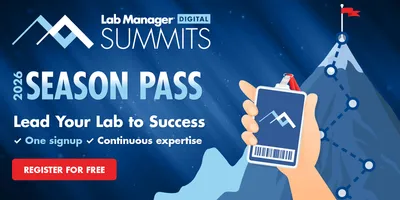Many lab managers hit a wall in their development—not because they lack technical expertise, but because they’re stuck in a tactical mindset. They must expand their thinking to include strategy. Their days are consumed by fixing problems, approving orders, or troubleshooting instrumentation, leaving no time—or energy—for big-picture thinking.
Christy Bowden, senior research and development manager at Arkema, knows this well.
“I was being told that I needed to improve my strategic thinking skills . . . and I didn’t really know what that meant,” she said during her talk at the 2025 Lab Manager Leadership Summit. “And I wasn’t hearing it at the conferences I was attending or in the trainings that I was getting from work.”
If you’re also wondering how to formulate effective strategies, Bowden's insights offer a clear roadmap forward.
Tactical vs. strategic thinking: what’s the difference?
To understand the shift required, Bowden suggests a simple analogy: American football.
She illustrates strategy as being what orients a team toward scoring a touchdown. Supporting the strategy are the tactics, which are represented by the players who huddle, pass, and catch to win the game. In short:
- Tactical thinking = day-to-day operations (How do we execute today’s tasks?)
- Strategic thinking = future planning and alignment (What are we doing? Why are we doing it?)
Bowden emphasized that while tactical execution is critical, it must increasingly give way to strategic orientation as you move up in leadership.
“As we grow as laboratory leaders,” she said, “we need to shift our thought process to the what and the why, and not necessarily the how to get it done.”
What strategic thinking looks like in lab management
In her talk, Bowden made clear that strategic thinking isn't an abstract skill—it's deeply practical. She cited everyday examples, such as capital planning, talent recruitment, and quality improvement.
Strategic lab management means thinking beyond immediate technical needs and asking bigger questions:
- How will today’s equipment purchases position us for future demands?
- How do we hire and develop staff not just for current roles but for where the lab needs to be in five years?
- How do our lab's key performance indicators reflect (or fail to reflect) broader business goals?
Critically, Bowden reminded leaders that strategic decisions involve uncertainty.
“There’s a lot more ambiguity in what you’re doing,” she said. “You’re not necessarily sure that the decisions that you’re making are going to turn out the way that they need to.”
Strategic thinking requires comfort with longer timelines, complex trade-offs, and decision-making in the absence of perfect information.
How to start thinking strategically
So, how can lab managers start building strategic thinking skills? Bowden offered a detailed blueprint:
1. Learn your organization's goals.
“Somehow, somewhere, your business is sharing information with you,” Bowden said. “You just need to find out where it is.”
This might mean reading internal reports, attending business updates, or asking your manager to clarify how your lab supports corporate priorities. Without understanding the end goal and how your lab’s metrics play into it, any attempt at strategy will be misaligned.
2. Build a strategic network.
While you’re learning what the organization’s goals are, Bowden recommended identifying key people who can help you. Connecting with those from other departments will let you view those goals through different lenses, which will help you synthesize a strategy for your lab that aligns with the big picture.
3. Volunteer for strategic projects.
Bowden also advised paying attention to opportunities for contribution and improvement. Getting involved in cross-departmental initiatives not only allows you to advocate for the needs of your lab; it will stretch your strategic muscles and increase your visibility. Similarly, the benefits of proposing lab process improvements extend beyond gaining smoother workflows; they also give you the chance to better align your lab with the organization’s overarching goals.
Advanced Lab Management Certificate
The Advanced Lab Management certificate is more than training—it’s a professional advantage.
Gain critical skills and IACET-approved CEUs that make a measurable difference.
4. Practice structured decision-making.
Bowden recommended a six-step framework:
- Anticipate risks and opportunities.
- Challenge assumptions and dig into root causes.
- Interpret information within broader organizational context.
- Decide among options.
- Align every decision with the organization's goals.
- Learn from results and adjust as needed.
Strategic thinkers anticipate not just the obvious impacts but the second- and third-order consequences.
5. Balance perspectives: zoom in and zoom out.
Lab managers must be able to dive deep into tactical realities when needed, but they can't lose sight of strategic objectives. Holding both views simultaneously—detail and direction—is essential.
“You need to be able to balance the zooming in and the zooming out,” Bowden said.
6. Remove biases and remain flexible.
Bowden warned that "unconscious biases" can cloud judgment. Remaining curious, open, and flexible enables more creative, effective strategies.
She also encouraged adopting multiple lenses, including how outsiders (such as customers or competitors) might view your lab's performance and positioning.
This is the work of leadership
“Strategic thinking is an important skill for laboratory leaders,” Bowden said, “because it’s necessary to be able to make those more difficult strategic decisions and help your organization meet their future focus goals.”
If you want to move beyond managing tasks and toward setting direction for your lab—and your career—strategic thinking is the next step.
Start small: review your lab’s annual goals. Ask a senior leader what the company’s top priorities are. Join a project that involves departments outside your own. And finally, don’t underestimate your current work.
“You are doing some level of strategic thinking already,” Bowden reminded attendees.












